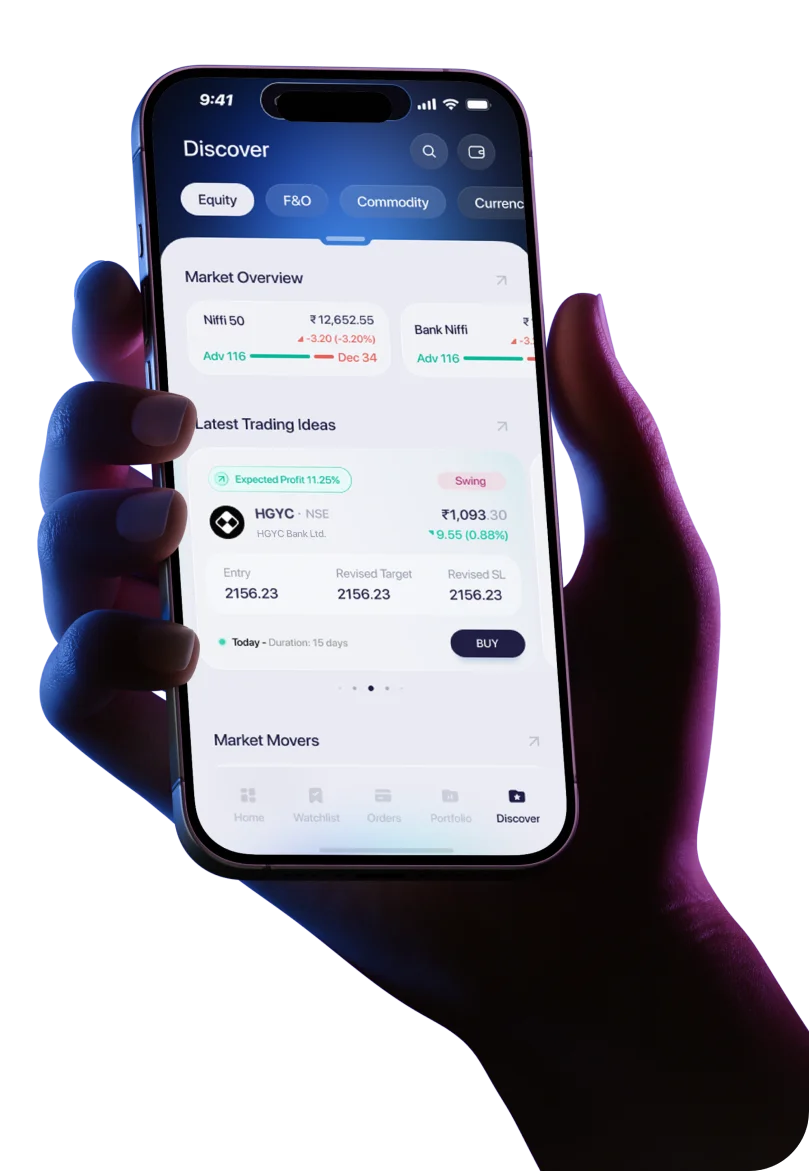Introduction: The Pulse of Market Fear
Markets are never still. They breathe in cycles of optimism and fear—sometimes racing upward in a wave of confidence, and sometimes plunging downward when uncertainty takes control. But how do we actually measure this fear and uncertainty? That’s where the VIX, or Volatility Index, comes into play.
Often called the “fear gauge” of the stock market, the VIX is a statistical measure that reflects market participants’ expectations of future volatility. In India, we track this through the India VIX, which is directly linked to the Nifty 50 options market on the National Stock Exchange (NSE). Simply put, it tells us how turbulent or calm the next 30 days are likely to be for Indian equities.
Why does this matter to investors? Because volatility affects everything: stock prices, portfolio values, trading strategies, and even investor psychology. A sudden spike in the India VIX often signals market panic, while a sustained low level indicates complacency. By understanding VIX, investors gain an edge in risk management, portfolio planning, and trading opportunities.
In this article, we will break down what VIX is, how it is calculated, its importance in trading and investing, historical case studies in India, common misconceptions, and how retail investors can use it to their advantage.
What is VIX (Volatility Index)?
The Volatility Index (VIX) measures the market’s expectation of volatility over the next 30 days. Think of it as a forward-looking barometer that tells you how much price fluctuation investors expect in the near term.
The original concept of VIX was developed in 1993 by the Chicago Board Options Exchange (CBOE) to track volatility expectations in the US stock market, specifically using S&P 500 index options. Since then, it has become a global standard, with almost every major market, including India, developing its own version.
India VIX vs Global VIX
- India VIX is calculated by NSE and reflects expected volatility in the Nifty 50 Index over the next 30 days.
- CBOE VIX (US) tracks volatility in the S&P 500 Index.
- While both measure “fear,” they are based on different markets and options data.
How to Interpret India VIX
The India VIX is quoted as an annualized percentage. For instance:
- If India VIX is 20, it means the market expects the Nifty 50 to move up or down by 20% annualized over the next year.
- To simplify, divide this by the square root of time. On a weekly basis, that’s roughly ±1.25%.
- In rupee terms, if Nifty is at 25,000, a VIX of 20 suggests traders expect a range of about ±312 points in a week.
Thus, India VIX does not tell you whether the market will go up or down. It only tells you how big the move could be.
How is VIX Calculated?
The calculation of VIX may appear complex, but its essence is straightforward—it is derived from option premiums on the Nifty 50 index. Options are financial instruments whose prices (premiums) embed expectations of future volatility.
Key Components of VIX Calculation:
- Nifty Options Data – India VIX uses both call and put options across a wide range of strike prices.
- Near-term & Next-month Contracts – Only the near-month and next-month options are considered for accuracy.
- Weighted Average – The implied volatility from these options is aggregated into a single number that represents expected market volatility.
Simplified Example:
Suppose option premiums (both calls and puts) on Nifty are unusually high. This signals traders are expecting big market moves—hence, India VIX will rise. Conversely, when option premiums are low, it indicates calmness, and India VIX falls.
Important Note:
Investors do not need to calculate VIX manually. The NSE updates and publishes India VIX in real time during market hours, just like it updates Nifty levels.
Think of it this way—just as a thermometer gives you the temperature without needing to understand thermodynamics, India VIX gives you the “temperature of fear” without needing to compute complex equations.
Importance of VIX for Investors & Traders
The India VIX serves as a multi-purpose tool for different types of market participants.
Gauge of Market Sentiment
- High VIX (say above 25) = high fear, high uncertainty.
- Low VIX (say below 12) = calm markets, investor confidence.
Risk Management
When VIX spikes, portfolios are at greater risk of sharp drawdowns. Long-term investors can use this signal to hedge using derivatives like protective puts.
Trading Opportunities
For traders, volatility itself is a tradable asset:
- High VIX = better environment for options writers (collecting high premiums).
- Low VIX = better for options buyers (cheaper premiums).
- Investor Psychology
Retail investors often panic when VIX rises sharply. But seasoned traders see it as an opportunity, because markets often bottom out when fear is at its peak.
Historical Trends & Case Studies
The India VIX has mirrored key turning points in the Indian stock market.
- 2008 Global Financial Crisis: India VIX shot above 80, its highest ever. Nifty collapsed, but investors who stayed calm eventually saw a historic rebound.
- 2013 Taper Tantrum: VIX spiked as global liquidity fears gripped emerging markets.
- March 2020 (Covid Crash): India VIX surged beyond 80 again, reflecting extreme panic. Nifty fell nearly 40% in a month, only to recover in subsequent quarters.
- Election Years (2014, 2019): VIX tends to rise before results, reflecting political uncertainty. Once results are out, volatility collapses quickly.
Chart Reference (Textual):
If you plot India VIX and Nifty on the same chart, you’ll notice an inverse relationship: when VIX spikes, Nifty usually falls; when VIX cools, Nifty rallies.
Thus, high VIX often acts as a contrarian indicator—a sign of panic that may precede market bottoms.
Misconceptions About VIX
Despite its importance, the VIX is often misunderstood.
- VIX is not directional.
A high VIX doesn’t mean markets will fall; it means they will move sharply. The move could even be upward. - Low VIX ≠ Safe Market.
Low volatility can mean complacency. Markets sometimes fall hardest after prolonged calm. - VIX Measures Expectations, Not Reality.
VIX is based on option prices, which reflect traders’ expectations. Actual market volatility may turn out to be very different.
How Can Retail Investors Use VIX?
For retail investors, India VIX is a useful but often underutilized tool.
- Hedging: If you hold a long-term portfolio and India VIX spikes sharply, you may consider buying protective puts on Nifty. This helps cushion downside risk.
- Options Strategies:
- Low VIX: Buy options (calls/puts) since premiums are cheaper.
- High VIX: Write options (straddles/strangles) to take advantage of inflated premiums.
- Event Preparation: Before Union Budgets, RBI policy, elections, or global events, tracking India VIX helps assess market nervousness.
- Samco Expert Tip: Retail investors can use Samco’s research and tools to track VIX levels and deploy hedging strategies effectively.
Conclusion & Key Takeaways
The India VIX is more than just a number—it is the market’s heartbeat, reflecting collective expectations of volatility in the near term.
- A rising VIX means uncertainty and possible turbulence.
- A falling VIX suggests stability and investor confidence.
- For traders, VIX helps design strategies around option pricing.
- For long-term investors, it serves as a warning system for risk management.
By tracking India VIX alongside the Nifty, investors can make better-informed decisions, avoid panic in times of crisis, and even spot opportunities hidden within market fear.
At Samco, we believe that mastering tools like India VIX is essential for building a resilient investing and trading strategy in today’s dynamic markets.
Final Word: Markets will always move, sometimes violently. But with India VIX as your guide, you can navigate volatility with confidence.




 Easy & quick
Easy & quick
Leave A Comment?